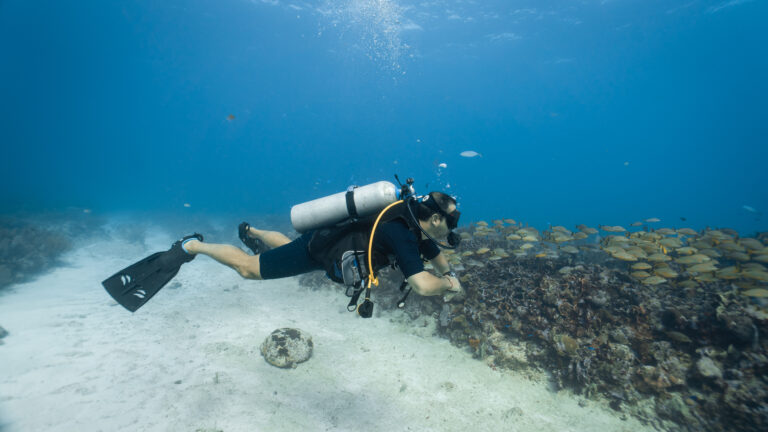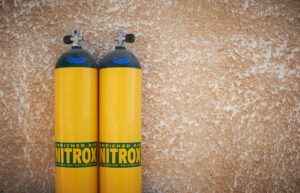What is a Dive Watch?
A dive watch is a specialized timepiece designed to withstand the harsh conditions of underwater environments. Initially developed in the early 20th century, dive watches are essential tools for scuba divers, providing accurate timekeeping and critical safety features during underwater activities. These watches are built to endure significant pressure and provide clear visibility under low-light conditions, making them indispensable for both professional and recreational divers. Over the years, dive watches have transcended their utilitarian purpose, becoming symbols of adventure and precision in both the diving community and the broader public consciousness.
History and Evolution of Dive Watches
The history of dive watches dates back to the early 20th century, with the development of the first waterproof wristwatches. One of the earliest significant milestones was the creation of the Rolex Oyster in 1926, which featured a hermetically sealed case to protect the movement from water. This innovation laid the groundwork for the future of dive watches, highlighting the importance of water resistance in watch design.
In the 1950s, the dive watch saw substantial advancements with the introduction of the Rolex Submariner and the Blancpain Fifty Fathoms. The Submariner, launched in 1953, became the archetype of modern dive watches, featuring a rotatable bezel for tracking dive times, luminous markings for visibility in low light, and a robust construction to withstand underwater pressure. The Blancpain Fifty Fathoms, also introduced in 1953, incorporated similar features and was used by elite military diving units, further cementing the dive watch’s reputation for reliability and durability.
Throughout the 1960s and 1970s, other notable brands entered the market, each contributing to the evolution of dive watch technology. Omega’s Seamaster, introduced in 1957, became famous for its association with professional divers and explorers. During this period, innovations such as the helium escape valve were developed to address the specific needs of saturation divers who worked at great depths. This era also saw the popularization of dive watches among the general public, driven in part by their appearance in popular culture and their endorsement by prominent figures.
The 1980s and 1990s marked the era of quartz movements, which offered increased accuracy and affordability. Despite this technological shift, mechanical dive watches continued to be highly valued for their craftsmanship and reliability. Brands like Seiko introduced their own innovations, such as the use of durable materials like titanium and the implementation of kinetic movements, which combined the accuracy of quartz with the traditional appeal of mechanical watches.
Design and Features
Dive watches are distinguished by their robust design and specialized features tailored to underwater use. One of the most critical design elements is water resistance, typically rated in meters or feet. A standard dive watch must be water-resistant to at least 200 meters (656 feet), though many models offer greater depth ratings to cater to professional divers.
The unidirectional bezel is another hallmark feature of dive watches. This rotating bezel, marked with minute indicators, allows divers to track elapsed time underwater safely. Its unidirectional movement ensures that any accidental bumps can only shorten, not lengthen, the perceived dive time, thereby enhancing safety.
Luminous markings are essential for visibility in the dim conditions underwater. Dive watches use luminescent materials on their hands, hour markers, and bezels, enabling divers to read the time accurately even in the darkest environments. This feature is crucial for monitoring dive times and ensuring adherence to safety protocols.
The construction materials of dive watches are selected for their durability and resistance to corrosion. Stainless steel is commonly used for its strength and resistance to rust, while higher-end models may employ titanium for its lighter weight and superior corrosion resistance. Sapphire crystal is often used for the watch face due to its scratch-resistant properties, ensuring the watch remains clear and readable over time.
The screw-down crown is a feature designed to enhance water resistance. By screwing down the crown into the watch case, a seal is created that prevents water from entering the watch. This feature, combined with robust gaskets, ensures that dive watches maintain their integrity under pressure.
Technical Specifications
Water resistance is a crucial specification for dive watches. The International Organization for Standardization (ISO) has established standards for dive watches, specifically ISO 6425, which dictates that a watch must be water-resistant to a minimum depth of 100 meters (328 feet) and meet various other criteria, including visibility, shock resistance, and resistance to magnetic fields. Most dive watches, however, exceed this minimum requirement, with ratings often starting at 200 meters (656 feet) and going up to 1000 meters (3281 feet) or more for professional models.
Dive watches can feature different types of movements: mechanical, automatic, or quartz. Mechanical movements rely on a mainspring wound by hand, while automatic movements are self-winding, harnessing the motion of the wearer’s wrist to wind the mainspring. Quartz movements, powered by a battery, offer superior accuracy and require less maintenance. Each type of movement has its own set of advantages, and the choice often depends on the user’s preference for tradition, convenience, or precision.
Pressure resistance and case integrity are vital for dive watches to function correctly at depth. Watches are tested in controlled environments to simulate the pressure they would encounter underwater. This testing ensures that the case, seals, and crystal can withstand the forces exerted by deep water without compromising the watch’s functionality. The use of helium escape valves in some models addresses the issue of internal pressure build-up during deep dives, allowing helium gas to escape without damaging the watch.
Usage in Diving
In practical terms, dive watches serve as essential tools for underwater timekeeping. Divers use them to monitor elapsed time, ensuring they do not exceed their planned bottom time and adhere to decompression schedules. The unidirectional bezel is a critical feature for this purpose, allowing divers to set a reference point and easily track the duration of their dives.
While modern dive computers have largely supplanted traditional dive watches in professional and technical diving due to their ability to monitor multiple parameters, including depth, time, and decompression status, many divers still prefer the simplicity and reliability of a mechanical or quartz dive watch. These watches do not rely on batteries or electronics, making them less susceptible to failure in harsh conditions.
The redundancy provided by a dive watch can be crucial for safety. In the event of a dive computer failure, a reliable dive watch can serve as a backup, allowing divers to continue their dives with confidence. The simplicity of a mechanical or quartz movement also means that dive watches require minimal maintenance compared to electronic dive computers, adding to their reliability.
Cultural Impact and Popularity
Dive watches have made a significant impact on popular culture, becoming symbols of adventure and precision. They have been prominently featured in films, literature, and even on the wrists of notable personalities. For example, the Rolex Submariner is famously associated with the character James Bond, adding to its allure and desirability among watch enthusiasts and the general public.
The symbolic significance of dive watches extends beyond their practical use. They represent a connection to the sea and the spirit of exploration, appealing to those who value durability, reliability, and timeless design. The rugged aesthetics and functional features of dive watches have made them popular among individuals who appreciate the blend of form and function.
Collectibility is another aspect of dive watches’ popularity. Vintage models, in particular, are highly sought after by collectors, often fetching high prices at auctions. The historical significance and the craftsmanship involved in creating these timepieces contribute to their desirability. Additionally, limited edition releases and collaborations with renowned divers or explorers further enhance the appeal of dive watches among collectors.
In everyday fashion, dive watches have transcended their original purpose to become versatile accessories suitable for various occasions. Their robust design and classic aesthetics make them suitable for both casual and formal settings, appealing to a broad audience. The ability to withstand extreme conditions while maintaining their functionality and appearance has cemented dive watches as timeless pieces in the world of horology.
Innovations and Future Trends
The world of dive watches continues to evolve with technological advancements and innovative designs. Recent developments have focused on enhancing the durability and functionality of these timepieces. For example, advancements in materials science have led to the use of ceramics and advanced composites, which offer superior resistance to scratches and corrosion.
Another area of innovation is the integration of smart technology into dive watches. Some modern dive watches now include features such as Bluetooth connectivity, allowing divers to sync their watches with their smartphones or dive computers for enhanced data tracking and analysis. These hybrid models offer the reliability of traditional dive watches combined with the convenience of modern technology.
Future trends in dive watch design may include further enhancements in water resistance, with watches capable of withstanding even greater depths. Additionally, the continued focus on sustainability may lead to the use of more eco-friendly materials and production methods, reflecting the growing environmental consciousness within the watchmaking industry.
Key Takeaways
Dive watches are specialized timepieces designed for underwater use, featuring robust construction and essential safety features. Their history, marked by significant advancements and iconic models, underscores their importance in both diving and popular culture. With ongoing innovations and a timeless appeal, dive watches continue to be valued for their reliability, functionality, and aesthetic charm.

















